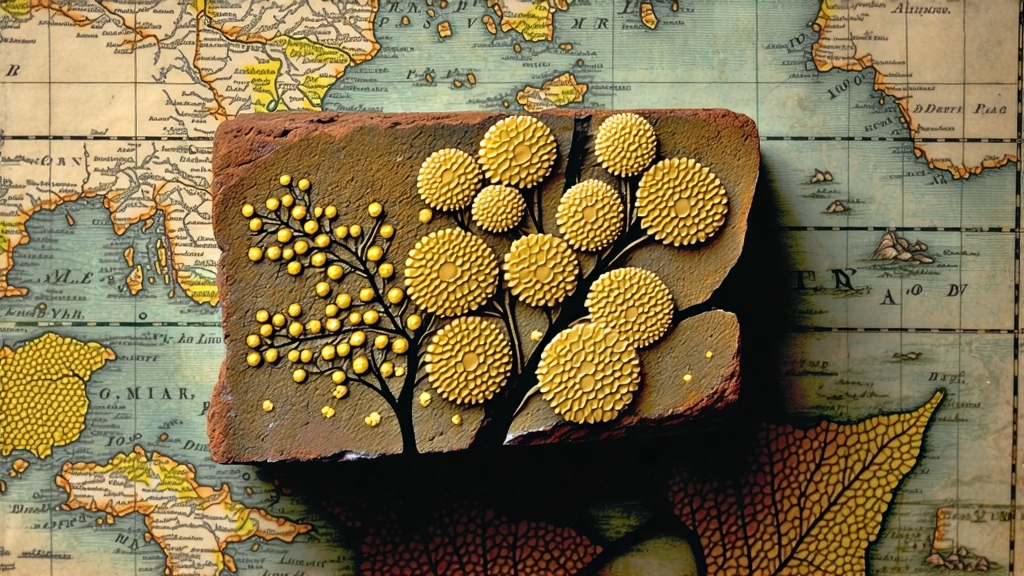
When most tea lovers outside China hear “dark tea,” they picture the malty depth of ripe Pu-erh. Yet farther north, in the wind-sculpted loess plateaus of Shaanxi province, another brick-shaped hei cha has been quietly fermenting for six centuries. Called Fu zhuan cha—literally “Fu brick tea”—it once greased the wheels of the Silk Road, paid soldiers’ wages, and cured the mutton-laden diets of nomads. Today it is prized less for its musky camphor than for the tiny golden freckles blooming inside every brick: a harmless mold that perfumes the tea with honeyed chestnut and dried apricot, while lowering lipids more aggressively than some prescription drugs. This article invites you to meet Fu brick on its own terms: its origin story, its microbial choreography, and the slow, forgiving ways it likes to be brewed.
-
From Horse-Tea to National Treasure
The tale begins in 1368, the first year of the Ming dynasty, when the imperial court nationalized the tea-for-horse trade along the northwest frontier. Caravans carried coarse green tea from the humid hills of Hunan and Shaanxi into the arid Ordos Desert. Compressed into two-kilogram bricks and wrapped in rough hemp, the tea endured six-month journeys on camelback. Along the way, seasonal humidity and body heat seeded the leaves with airborne fungi. By the time the bricks reached the markets of Xi’an or the Tibetan plateau, their once-grassy liquor had mellowed into something dark, sweet, and magically digestif. Locals credited the change to “fa hua”—the blossoming—and imperial inspectors soon graded bricks by how densely the golden speckles colonized the interior. In 1953 the China Tea Company standardized the process, moving production to the county of Jingyang, where the fog off the Jing River and the alkaline loess create ideal spore nurseries. In 2008 Fu brick making was inscribed on China’s National Intangible Cultural Heritage list, cementing its passage from frontier currency to living craft. -
The Leaf, the Fungus, and the Factory
Fu brick is not a single cultivar but a recipe. The base material is summer-picked da ye zhong (large-leaf) tea from altitudes between 600 and 900 m in Hunan, Hubei, or southern Shaanxi. Leaves are intentionally coarse; the thicker cell walls provide hemicellulose for Eurotium cristatum to munch on. After pan-firing and rolling, the maocha is sun-dried to 12 % moisture, then trucked to Jingyang for the real alchemy.
The workflow follows five precise steps:
a. Pile-fermentation (dui wo): 5–7 days at 60 °C, 85 % RH, turning the leaf pile into a composty brown.
b. Steam-softening: 30 s of 100 °C steam to make the leaves pliable for pressing.
c. Inoculation: A spore-rich “mother brick” is ground and dusted onto the tea, ensuring even colonization.
d. Brick forming: 2 kg portions are pressed in century-old box molds lined with cotton; the cotton breathes, preventing anaerobic rot.
e. Flowering (fa hua): Bricks are stacked in climate-controlled bunkers for 8–12 days at 28 °C and 75 % RH. During this time Eurotium cristatum erupts into golden yellow cleistothecia—tiny spherical fruiting bodies—visible to the naked eye as a starry dust. The fungus secretes enzymes that oxidize catechins, convert starch into soluble sugars, and cleave bitter peptides, yielding the tea’s signature mellow sweetness.
-
Reading the Brick
A well-aged Fu brick is a codex. Crack one open and you will see three horizontal strata: the olive-brown “skin” (1–2 mm) where oxygen levels are too high for Eurotium; the golden “flower layer” (5–8 mm) densely freckled; and the chestnut core where fermentation is slower, lending depth. The tighter the compression, the longer the bouquet lasts—some collectors cellar bricks for thirty years, during which the golden flowers recede but the liquor gains notes of sandalwood and dried longan. -
Brewing: Patience over Precision
Unlike green tea that punishes the careless with bitterness, Fu brick is forgiving. Its goal is to coax fragrance without scalding the sp